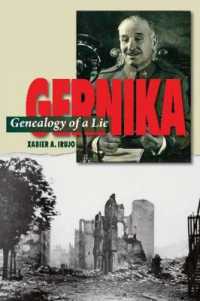Full Description
Tracing Tangueros offers an inside view of Argentine tango music in the context of the growth and development of the art form's instrumental and stylistic innovations. Rather than perpetuating the glamorous worldwide conceptions that often only reflect the tango that left Argentina nearly 100 years ago, authors Kacey Link and Kristin Wendland trace tango's historical and stylistic musical trajectory in Argentina, beginning with the guardia nueva's crystallization of the genre in the 1920s, moving through tango's Golden Age (1925-1955), and culminating with the "Music of Buenos Aires" today. Through the transmission, discussion, examination, and analysis of primary sources currently unavailable outside of Argentina, including scores, manuals of style, archival audio/video recordings, and live video footage of performances and demonstrations, Link and Wendland frame and define Argentine tango music as a distinct expression possessing its own musical legacy and characteristic musical elements.
Beginning by establishing a broad framework of the tango art form, the book proceeds to move through twelve in-depth profiles of representative tangueros (tango musicians) within the genre's historical and stylistic trajectory. Through this focused examination of tangueros and their music, Link and Wendland show how the dynamic Argentine tango grows from one tanguero linked to another, and how the composition techniques and performance practices of each generation are informed by that of the past.
Contents
Acknowledgments
About the Companion Website
Introduction. Argentine Tango: A Multidimensional Art Form
Part One: Argentine Tango Instrumental Music
I. What Makes It an Argentine Tango?
II. Trajectory of Argentine Tango Instrumental Music
III. Arranging and Performance Techniques
Part Two: Representative Argentine Tangueros and Their Orchestras from the Guardia Nueva to Today
IV. The Guardia Nueva and the Golden Age (1925-55)
Julio De Caro
Aníbal Troilo
Osvaldo Pugliese
Cafecito Interlude: Juan D'Arienzo and Carlos Di Sarli
V. Post-Golden Age (1955-1990)
Horacio Salgán
Astor Piazzolla
Julián Plaza
Leopoldo Federico
Cafecito Interlude: Rodolfo Mederos and Néstor Marconi
VI. The "Music of Buenos Aires" (1990-present)
Damián Bolotin
Sonia Possetti
Juan Pablo Navarro
Postre: Part Two Conclusion
Notes
Bibliography
Index of Titles and Translations
General Index








